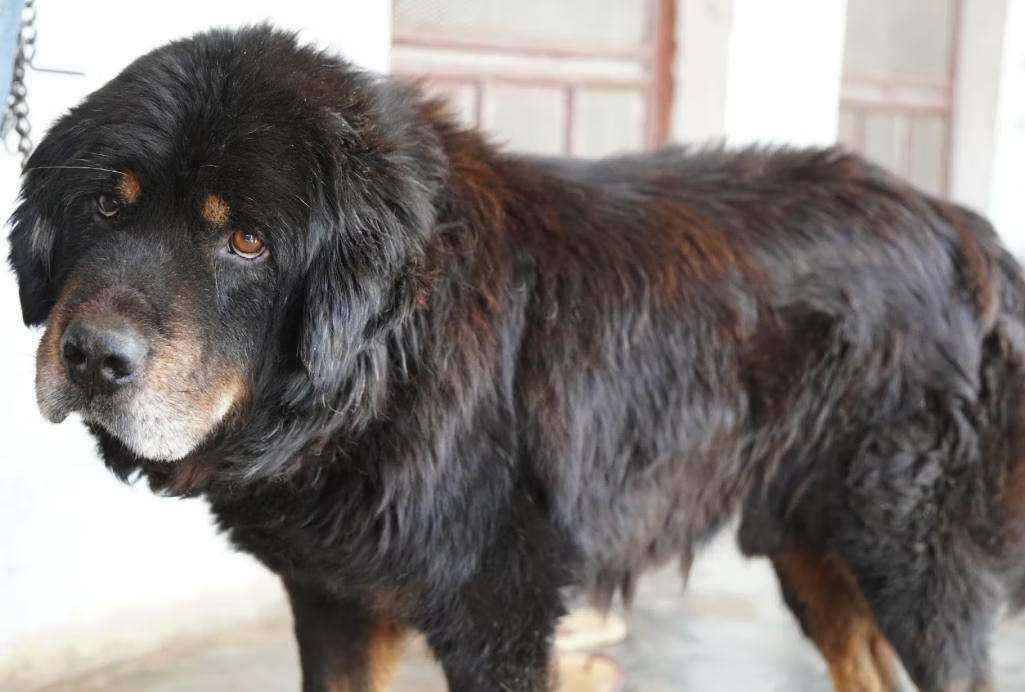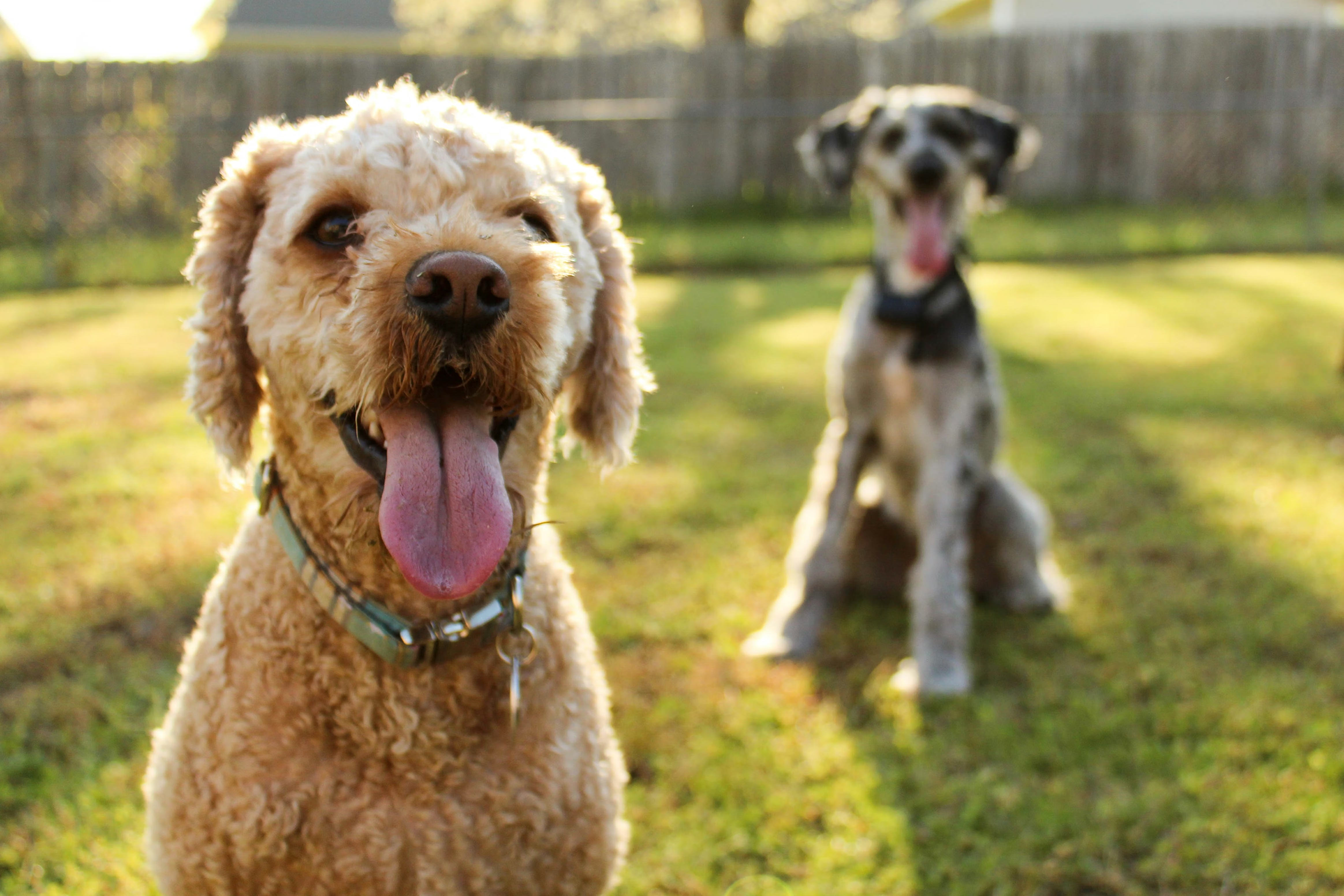The Himalayas of Asia contain more than 100 of the world’s tallest mountains, and span or touch five countries: the Tibet Autonomous Region of China, Bhutan, India, Nepal, and Pakistan. Because of the sheer height and length of the mountain range, the weather in the Himalayas ranges from a very moist, sometimes tropical climate on the southern side of the Himalayas in Nepal, India and Bhutan, to an arid, windy, very cold climate on the north side, in the Tibetan Plateau. Countries and peoples of the adjacent Central Asian Plateau (Mongolia, northern China, Kazakhstan, Kyrgyzstan, Tajikistan, Turkmenistan, and Uzbekistan) often have similar, though less extreme, climates.
People throughout the Himalayan mountain and Central Asian Plateau regions have kept livestock guardian dogs (LGD) for millennia to protect their flocks and homes. Over time, these dogs have developed features that allow them to thrive in their roles and locations.

The Himalayan Mountain Dog landrace
The Himalayan Mountain Dog (HMD) is not a breed in the modern sense. In modern breeding, no “new” individuals of that breed are ever introduced or discovered. They are all the offspring of founding dogs recorded by pedigree, and a registry defines who is purebred and a member of the breed. The HMD, on the other hand, is better understood as a landrace. Landraces are populations of dogs that are genetically similar, and often physically or behaviorally similar. These dogs have been influenced by their environment so they are specific to a geography for traditional work.
Local dogs have been the source of the Himalayan Mountain Dog for millennia, so they are genetically of Asian origin. This in itself is special, as the most significant location of dog domestication is estimated to be Southeast Asia.
Characteristics of Himalayan Mountain Dog
In order to succeed in their jobs, traditional HMDs must possess several characteristics. These include:
- Large, agile, and smart enough to defend against snow leopards, bears, or wolves that threaten their flocks, and able to deter humans that intrude on homes and property
- Small enough to feed efficiently, often surviving primarily on barley porridge (tsampa)
- Able to travel significant distances if the owners are nomadic
- Intense loyalty to and the ability to bond strongly with their owners or flocks
- Demonstrate guarding instincts with the ability to be an independent thinker
- A willingness to be handled by their owners
- A natural wariness of strangers
The environmental conditions in which they live have resulted in many traits shared by these breeds, including:
- Curled plumed tails
- High-set folded ears
- Thick double coats
- Deep-set eyes and square muzzles with fleshy but dry lips to protect against cold
Additionally, some HMDs have variations depending on their local conditions. For example, many HMDs have a high-altitude adaptation, similar to humans, located in the EPAS1 gene.
And on the north side of the Himalayas and in the plateaus of Mongolia and Central Asia, where the winds can be intense, the dogs tend to have longer coats than in the southern regions of Nepal, India, and Bhutan. In isolated regions, furnishings (thick beard and eyebrows) are seen.
In terms of coloring, unlike the livestock guardian dogs of Europe, where white coloration is favored, black and tan pointing are the most common colors for HMDs. However, shades of red, blue (dilute black), chocolate, isabella (dilute chocolate), sable, and brindle can also be found. Heavy white spotting is not typically seen, and merle indicates Western breed introduction. Rear dewclaws caused by a mutation specific to Asian breeds (DC-1, LMBR1) is also often seen.

Some regional HMDs types which may be considered part of the HMD landrace are:
- Do-Khyi (Aboriginal Tibetan Mastiff) - Tibet Autonomous Region of China
- Apso Do Khyi (Tibetan Kyi Apso) - Tibet Autonomous Region of China
- Bhote Kukur - Nepal
- Gaddi dog - India
- Bankhar - Mongolia
- Bjop Chi (Bhutan shepherd dog, Bhutia sheepdog) - Bhutan
- Bakarwal (Kashmir sheepdog) - Pakistan and India

Himalayan Mountain Dogs of the past
Many of the peoples of the Himalayas and surrounding plateaus have a tradition of transhumance, which has been practiced for close to 1,000 years. Transhumance is a type of seasonal nomadism in which flocks are moved to mountain grazing in the warm summer months, and down to valleys for the cold winters. HMDs play a key role in protecting flocks from predation when grazing livestock in remote areas, and protecting nomadic shelters like yurts (i.e. gers) when permanent walls or fences aren’t present.
One of the reasons it is thought there is so much similarity between the many landraces of the HMD, despite the distance, is due to the Mongol Empire and the conquests of Genghis Khan, which spanned all of the Himalayas and the Central Asian Plateau in the 13th and 14th centuries, potentially bringing Mongolian dogs with them. The Mongolian Bankhar is therefore theorized to play an outsized role in the genetic history of other more distant HMD landraces, although research to confirm this hypothesis is needed. Many cultural traditions of the region involve dogs, even if they are not practiced any more. And to this day, when approaching a Mongolian yurt, the traditional greeting is “Nokhoigo Khorioroi” or “hold your dog!”

Himalayan Mountain Dogs of the present
In the last century, increasing urbanization, privatization of land, extinction of predators, and climate changes have led to a trend of abandonment of this traditional pastoral lifestyle across the Himalayas—and the traditional dogs that go with it. Political upheavals have often also involved extermination or control and “improvement” of the native dogs as symbols of culture. The result has been the extinction of the traditional type, or significantly diminished or isolated populations of HMDs.
Enthusiasts of traditional livestock guardian dogs of the Himalayas have reacted by forming groups to help preserve not only the knowledge and history of these dogs, but the genetic heritage of the HMD. This includes funding or promoting preservation programs, raising awareness about their cultural importance, or training shepherds to take up these special dogs again. Some groups or individual breeders have focused on preservation of specific landrace types, such as the Mongolian Bankhar Dog Project, or the Kazakh Tobet Foundation, while others have focused more broadly on the HMD as a landrace.
Wisdom Panel has partnered with the Himalayan Mountain Dog Club International (HMDCI), a multinational group of HMD owners and breeders seeking to preserve the Himalayan Mountain Dog in all its traditional forms. The philosophy of the HMDCI is that by pooling resources and genetic lines of the remaining HMDs in their home countries, genetic bottlenecks can be avoided, and a more united effort to preserve these wonderful dogs can be made. Because little is known about these dogs and their genetic makeup, Wisdom Panel is proud to work with the HMDCI to collect and genotype traditional HMDs from all over Nepal, and is researching the genetics of these dogs as well as ones from other areas of the Himalayas.
Although at this time the HMD is not offered as part of Wisdom Panel’s ancestry testing services, a special program for breeders of this traditional landrace is available upon request.



